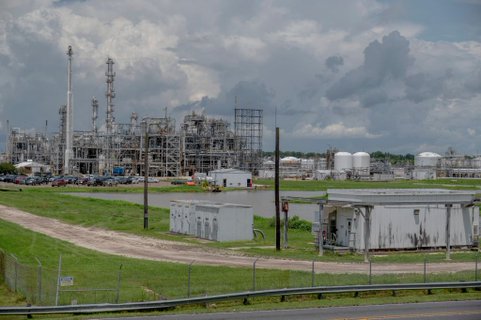
We all have a right to breathe clean air. But discriminatory zoning practices and unequal protection of environmental laws have placed some communities at greater risk of exposure to toxic petrochemical pollution, threatening their health.
Mark Mulligan/Environmental Defense Fund
The map also shows which parts of the country bear the greatest health risk.
Mark Mulligan/Environmental Defense Fund
Mark Mulligan/Environmental Defense Fund
Pollution from cars and trucks, agriculture and other industries also contribute to a community’s risk.
We’d like to express our gratitude to the following partners whose expertise informed the development of this map: Air Alliance Houston, Bullard Center for Environmental and Climate Justice, Center for International Environmental Law, Earthjustice, Environmental Health Project, Halt the Harm Network, Johns Hopkins University, Micah Six Eight Mission, Rocky Mountain Institute, and West Virginia Rivers Coalition
CLEAR Collaborative is working toward a healthier, more equitable future for communities on the frontlines of petrochemical pollution in Texas and Louisiana. We work to make sure that communities are equipped with the support and resources they need to hold polluters accountable and to secure a safe, thriving future for generations to come.
Last year, a chemical disaster happened nearly every day in the U.S.
It doesn't have to be this way. Stronger rules and better enforcement can help prevent toxic chemical pollution & protect our health so that all communities can thrive. @project_descend
"As the oil and gas industry tells it, they’re the economic bedrock of the communities across the country where they operate," @project_descend co-founders Jo and Joy Banner write. "But jobs should not come at the cost of our health and safety."

Health and Safety Risks Shouldn’t Be the Cost of Doing Business
Last year, a chemical disaster occurred nearly every day in the U.S. and existing rules are not rigorously enforced. We can do better.
wordinblack.com
WATCH: Texas has more chemical disasters than any other state, according to the chemical incident database from the Coalition to Prevent Chemical Disasters. @CamiL_Ferrell